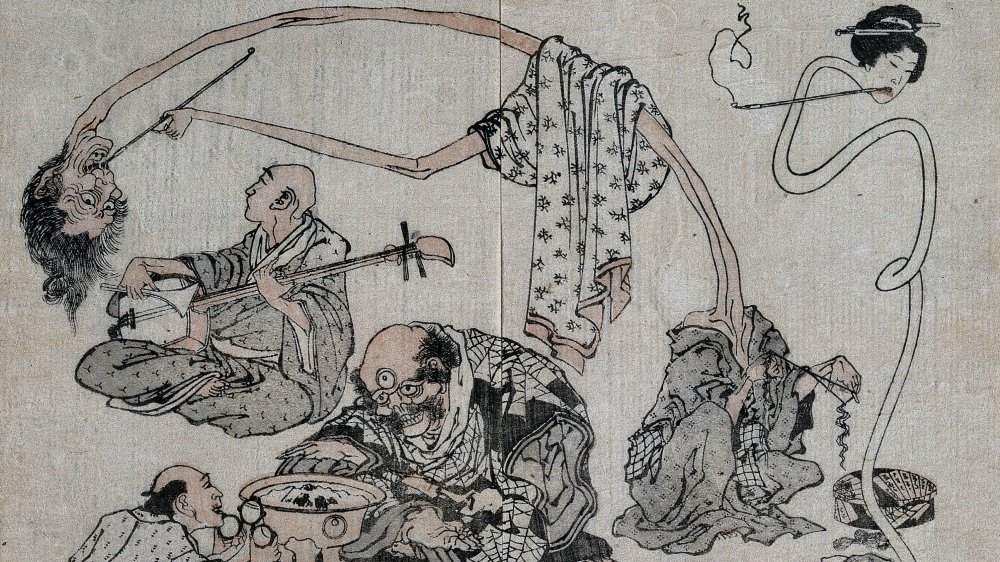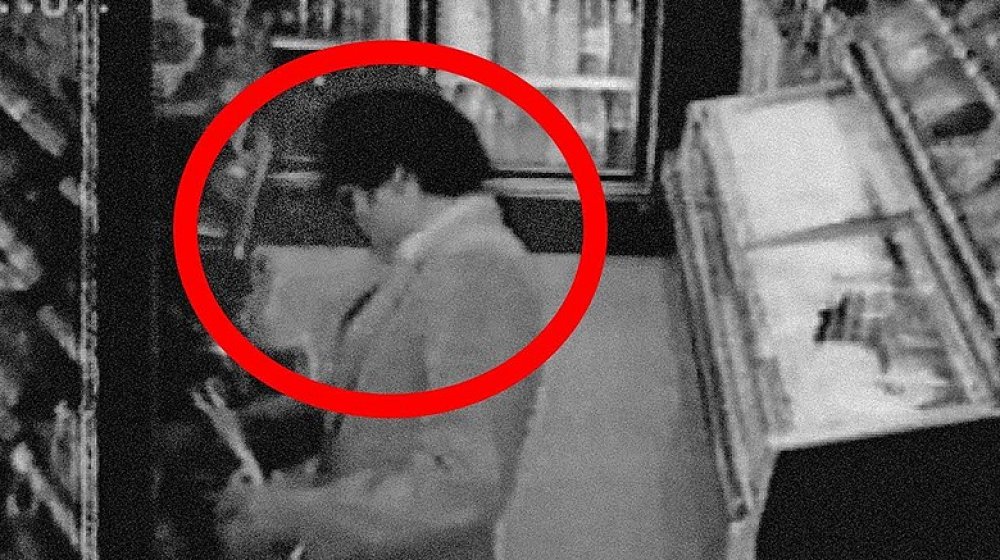The Bizarre Mystery Of The Monster With 21 Faces
Japan has more than its fair share of ghost and monster tales. Yurei, as described on Deep Japan, are the spirits of the dead, sub-divided into categories such as onryo (vengeful women like the slit-mouthed woman) and goryo (members of the aristocracy). Yokai, by contrast, consist of all manner of mischievous or benign creature, ghoul, goblin, and shapeshifter, such as kappa (frog-like creatures that pull children into water and drown them), azukiarai (gnome-like bean-washing entities), and hitodama (fireballs that appear when someone dies). And of course, there's the ever-popular 100-eyed fleshmass, hyakume, which, despite its gruesome appearance, tends to shy away from humans and keeps an eye (or 100) on criminal activity, per Yokai.
One multi-eyed monster of Japan, however, was self-named and real: the Monster with 21 Faces (and presumably 42 eyes). This individual, or group — they were never found — terrorized the candy market in Japan in the 1980s, as described in Mysterious Universe. The Monster with 21 Faces was a Zodiac-type of criminal who taunted Japanese police with letters. He was not a serial murderer, though, but an apparent poisoner of candy and snacks made by food manufacturers such the Osaka-based Gilco company (maker of the popular pretzel-and-chocolate sticks, Pocky). He, or they, were never apprehended, and led the police on a bizarre chase that possibly has roots in the Gilco company's 1975 illegal dumping of industrial waste, and which ended in the self-immolation of Shiga Prefecture Police Superintendent Yamamoto in 1985 after failing in his duties.
Halloween's worst enemy
The strange case of the Monster with 21 Faces began at 9:00 pm on March 18, 1984, when two armed perpetrators broke into the home of Katsuhisa Ezaki, CEO of the Gilco candy company. He was taken to a secluded warehouse and held at ransom for 1 billion yen (9.3 million dollars) and 100 kilograms (about 220 pounds) of gold bullion, but escaped before the company decided whether or not they would pay. Weeks later in April several cars at Gilco were set on fire, and a month after that, a letter was found taped to a bottle of hydrochloric acid written by the self-titled "Monster with 21 Faces" saying that Gilco candy had been poisoned. No such candy was found, but the product recall cost Gilco 21 million dollars and 450 people their jobs.
After this, the perpetrator — like a health-advocate with questionable tactics — turned his attention to the Morinaga candy company, and claimed he'd poisoned 21 packages of snacks. The only lead was someone dubbed "The Fox-Eyed Man" (for the shape of his face) seen at the site of a 50-million yen ransom drop-off, which the Monster with 21 Faces demanded in exchange for stopping his actions. As it turns out, though, 50 million yen wasn't enough, and the Monster with 21 Faces demanded 100 million yen more later that year in November. The police obliged, set up a sting operation, and were seemingly spotted by the Fox-Eyed Man before he raced away in his car.
The rise of a new urban legend
Seemingly in retaliation, the Monster with 21 Faces started threatening yet another candy company, Fujiya, in late 1984. This is when a man named Manubu Miyazaki blew the whistle on Gilco's 1975 illegal waste dumping. Miyazaki had been apprehended by the police as a suspect in the case, largely for the similarity of diction between he and the letters of the Monster with 21 Faces. Miyazaki's father, a mafia (yakuza) boss, looked very much like sketches of the Fox-Eyed Man, but in the end, Miyazaki was released because his alibis checked out.
The media was all over this case, of course, and there was a lot of blame laid at the police, who in the end questioned over 12,000 people using over 1 million officers. This is when Shiga Prefecture Police Superintendent Yamamoto shockingly set himself on fire. In response to this event, the police received one final letter from the Monster with 21 Faces, in a strangely cajoling, yet conciliatory tone. Among other things he wrote, "Don't let bad guys like us get away with it. There are many more fools who want to copy us. No-career Yamamoto died like a man. So we decide to give our condolence. We decided to forget about torturing food-making companies."
And so he, or they, did exactly that. The statute of limitations on the crime ran out in 1995, 10 years later, leaving behind a legacy of theories, myths, and even pop culture references such as inspiring the villain in the anime Ghost in the Shell: Stand Alone Complex. In this way, the Monster with 21 Faces has become a modern-day yokai of sorts, as bizarre as any ancient myth.


